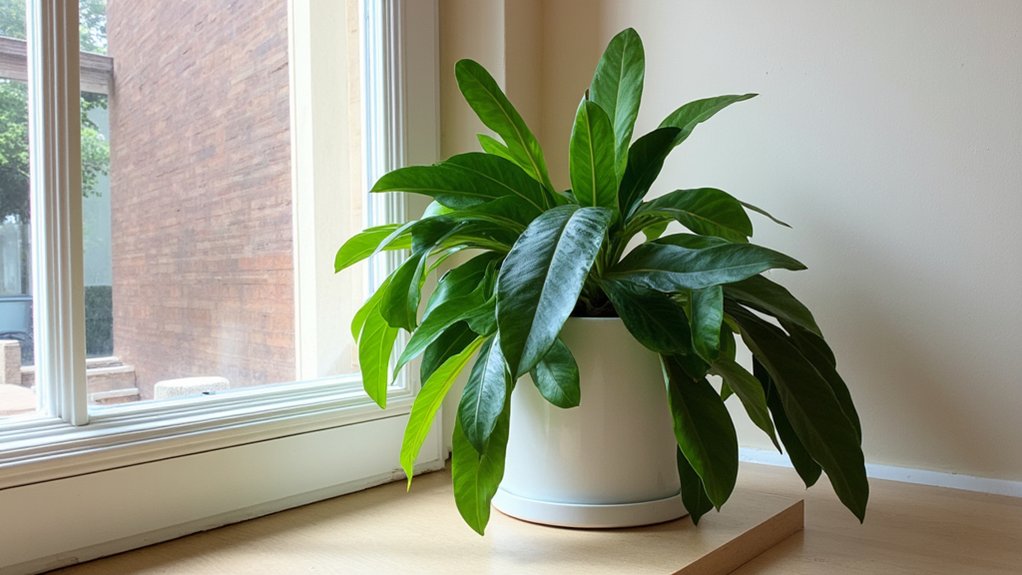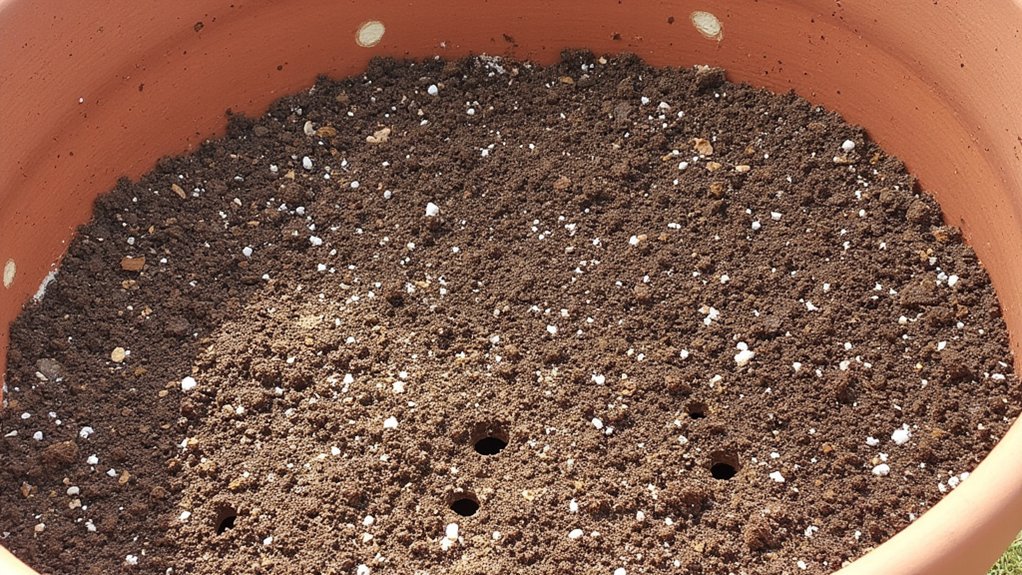If you’re considering adding a Clusia to your indoor plant collection, you’ll want to understand its core care requirements. This tropical plant can thrive in your home with the right conditions, though it’s not quite as forgiving as some common houseplants. While Clusias are known for their thick, glossy leaves and air-purifying abilities, they need specific light, water, and humidity levels to maintain their attractive appearance and healthy growth. Let’s explore the essential care guidelines for success.
Contents
Light and Temperature Requirements

While Clusia plants naturally thrive in bright tropical environments, they’re surprisingly adaptable to indoor lighting conditions. You’ll want to place your Clusia in bright, indirect sunlight for 6-8 hours daily, keeping it at least 3 feet from south-facing windows to prevent leaf burn.
Temperature-wise, your Clusia will do best between 65-80°F during the day and no lower than 60°F at night. If you’re growing it near a window, don’t let the leaves touch cold glass during winter. These plants can tolerate brief temperature fluctuations but won’t survive prolonged exposure to temperatures below 55°F.
Watering and Humidity Needs
Since Clusia plants have thick, waxy leaves that store water efficiently, you’ll need to water them less frequently than many other houseplants. Allow the top 2-3 inches of soil to dry between waterings, typically every 7-10 days during growing season and every 14-21 days in winter.
While Clusias don’t require high humidity, they’ll thrive in levels between 40-60%. You can maintain these levels by placing a humidity tray filled with pebbles and water beneath the pot, or by using a small humidifier nearby. Don’t mist the leaves directly, as this can lead to fungal issues on their waxy surface.
Soil Type and Potting Guidelines

Proper soil selection supports your Clusia’s moisture management needs and root health. Choose a well-draining potting mix that combines regular potting soil with perlite and orchid bark in a 2:1:1 ratio, ensuring your plant won’t sit in waterlogged conditions.
When potting your Clusia, select a container that’s 2 inches wider than the root ball and has multiple drainage holes. Fill the pot’s bottom with a 1-inch layer of gravel, then add your soil mixture. Don’t plant too deeply – keep the stem base at the same level it was growing before, and leave 1 inch of space below the pot’s rim for watering.
Feeding and Fertilization Schedule
Although Clusias aren’t heavy feeders, they’ll benefit from regular fertilization during their growing season between March and September. Apply a balanced, water-soluble fertilizer with an NPK ratio of 10-10-10 once every four to six weeks.
During winter months, stop fertilizing completely to allow your Clusia to enter its natural resting phase. If you notice pale leaves or stunted growth during the growing season, you can supplement with a liquid fertilizer at quarter strength. Don’t overfeed your plant, as this can lead to salt buildup and root damage – it’s better to under-fertilize than overdo it.
Common Problems and Troubleshooting

Even with the right fertilization schedule, Clusia plants can face several common issues that you’ll want to watch out for. Yellow leaves often indicate overwatering, while brown, crispy edges suggest underwatering or low humidity. If you notice leaf drop, check for drafts near windows or air vents.
Pest problems typically include mealybugs and spider mites, which you can spot by looking for white, cotton-like masses or fine webbing. Treat infestations immediately with insecticidal soap, applying it every 7-10 days until the pests are gone.
Root rot is another frequent issue, showing up as mushy stems and wilting leaves. You’ll need to remove affected roots and repot in fresh, well-draining soil.
